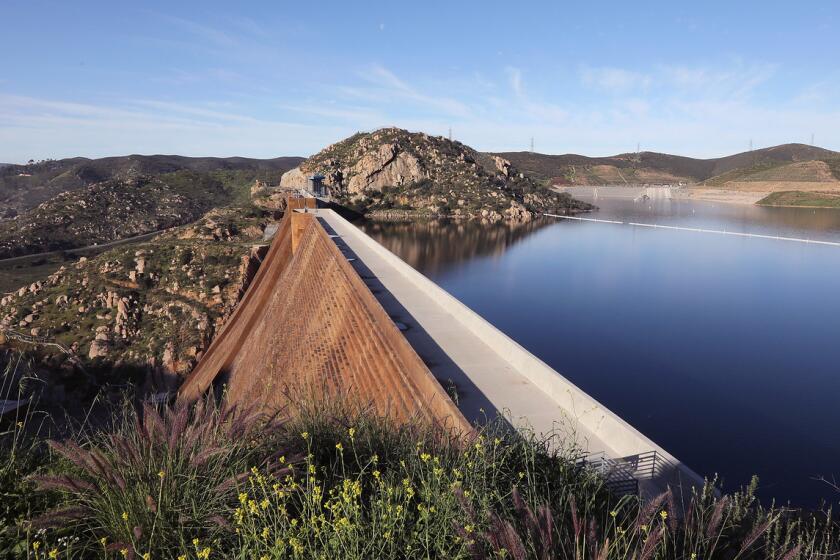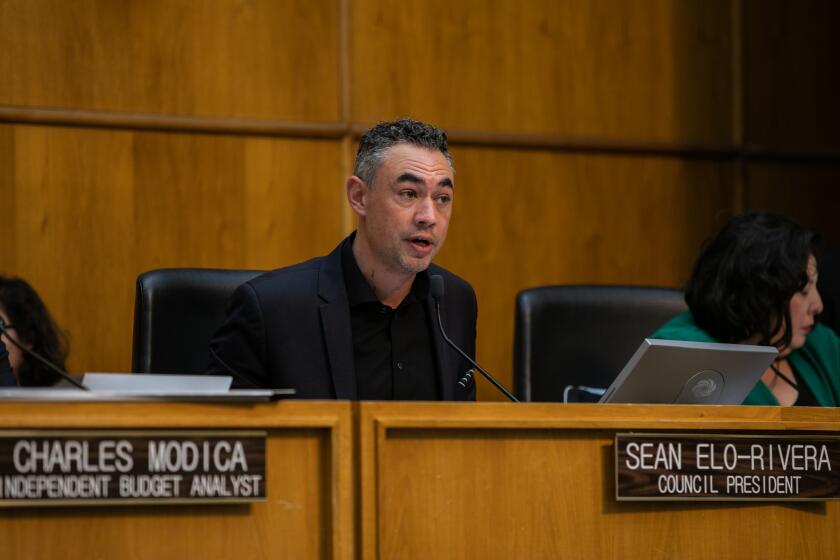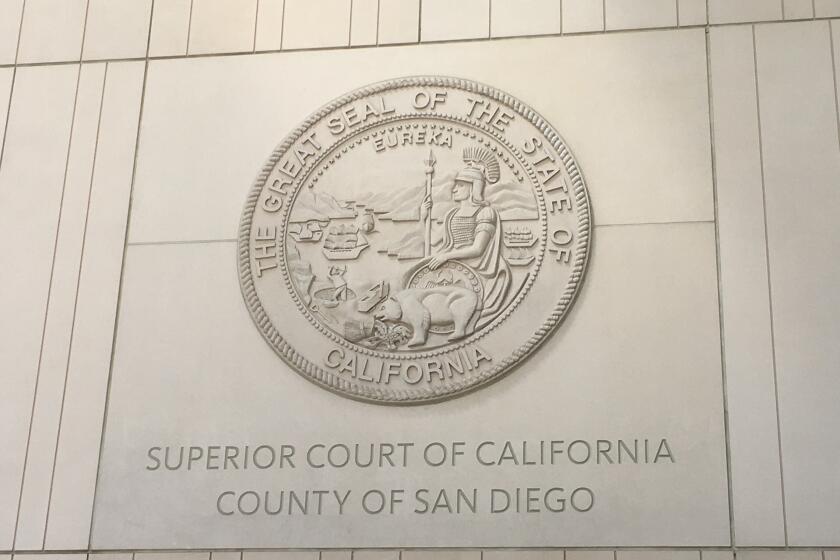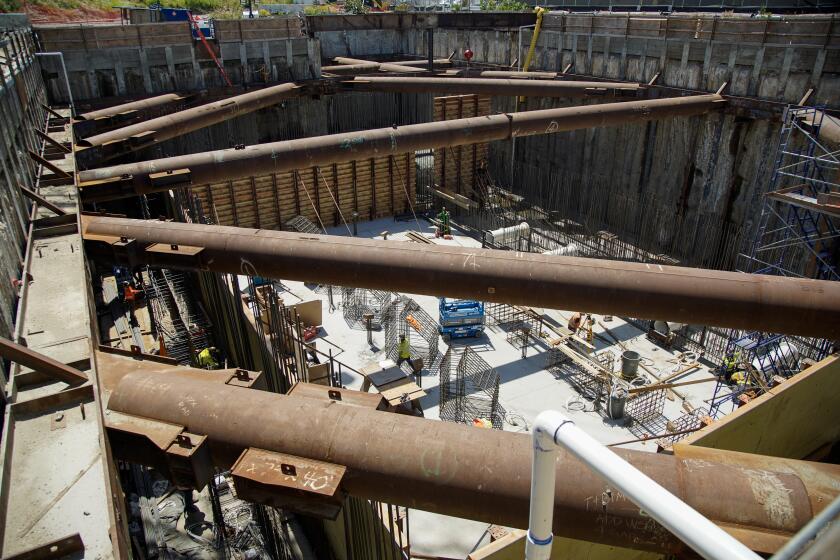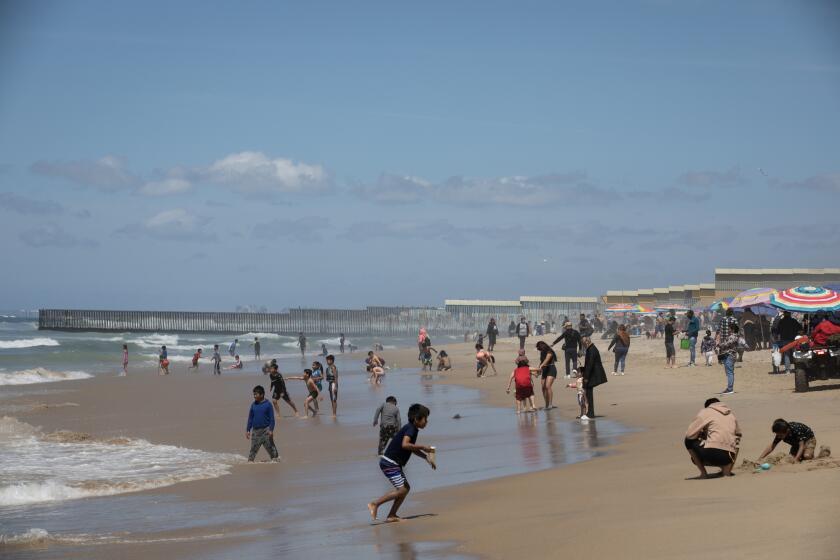San Diego accelerates water recycling
San Diego is accelerating construction of its landmark water recycling system and making other changes that will save money, benefit the environment and make pipeline construction less disruptive.
City officials plan to begin recycling 30 million gallons a day of sewage into drinking water by 2021, much quicker than a previous schedule calling for 15 million gallons daily by 2023 and 30 million gallons per day by 2027.
RELATED: SD OKs landmark water recycling
The faster schedule is possible primarily because officials have decided to do all of the recycling in Miramar instead of splitting it in half between Miramar and Otay Mesa.
Another factor in the acceleration was a recent decision to pump the water into the Lake Miramar reservoir 8 miles away instead of the larger San Vicente Reservoir 18 miles away, shortening the pipeline construction time line.
This change will save roughly $50 million and reduce neighborhood and traffic disruptions during pipeline construction, although it will create disruptions in parts of Miramar and Scripps Ranch that wouldn’t have happened under the old plan.
Officials have also decided to make the Miramar purification plant more environmentally friendly by using methane from the nearby Miramar landfill as its power source.
The move will simultaneously relieve regulatory pressure on the city’s Environmental Services Department to sharply reduce methane emissions from the large Miramar landfill.
City officials and local environmental groups last week praised the changes, particularly the accelerated schedule and the energy partnership with the landfill.
Councilman Chris Cate called them a “big deal” and Matt O’Malley, legal and policy director for the Coastkeeper environmental group, said the acceleration was a remarkable surprise.
“We were told it was a near impossibility, so we’re really encouraged to see city staff accomplishing the impossible here,” O’Malley said.
The recycling system, dubbed Pure Water San Diego, will help San Diego meet mandates to reduce the amount of partially processed sewage it dumps into the ocean.
In addition, it will allow the city to avoid spending more than $2 billion on upgrades needed at the Point Loma Wastewater Treatment Plant.
To do that, the city needs to complete the second phase of the project, which would increase the amount of recycled gallons per day from 30 million to 83 million — one third of the city’s water supply.
The first phase is expected to cost about $1 billion, with the system’s entire price tag estimated at $2.9 billion.
The second phase will include building additional purification systems and pipelines to other reservoirs, including Lake Murray.
One system would be created by expanding the South Bay Wastewater Treatment Plant near the international border, which had been planned as part of the first phase. The second would be building a new plant somewhere on Harbor Drive near downtown.
The recycled water from the first phase will serve customers north of Interstate 8, said Brent Eidson, deputy director of the city’s Utilities Department. The second phase would serve other parts of the city, he said.
Accelerating the first phase “creates an opportunity” to also complete the entire system ahead of its 2035 schedule, Eidson said. But no decisions to accelerate the second phase have taken place, he said.
The chain of events leading to acceleration of the first phase began when strong water conservation in San Diego made it doubtful the city could supply enough sewage to the Miramar plant to produce 15 million gallons of recycled water per day.
City officials decided they needed to build a pump station in the Morena area to supply more sewage to the plant, Eidson said.
But they subsequently decided it was more cost-effective to build a large pump station instead of a small one, prompting the idea to produce all 30 million gallons in Miramar.
That will require a larger expansion of Miramar’s North City Reclamation Plant than previously planned, Eidson said.
The plant, which now processes 22 million gallons a day of sewage into non-drinkable water used chiefly for irrigation, must be expanded in daily capacity from 30 million gallons to 52 million gallons. The previous plan was to expand it to 45 million gallons.
The increase is only 7 million gallons, not 15 million, because recent analysis indicates less future demand than previously thought for irrigation water, also known as “purple pipe” water.
“It’s a lot more cost-effective this way because we got to the point where we had to build a pump station anyway,” Eidson said. “We’re trying to do the right thing for the ratepayers and part of that is getting the right size.”
Another factor in the acceleration was a recent environmental analysis and consultant’s study of building a pipeline to the San Vicente Reservoir, Eidson said.
The distance and the change in elevation of that approach made using Lake Miramar a far better choice, Eidson said.
“The pipeline alignment for San Vicente, by trying to stay in public rights of way, was really going to be impactful, not just in the city of San Diego but in Santee and Lakeside,” he said. “Now we’re able to go in wider streets through Miramar and Scripps Ranch, which is a lot less disruptive.”
However, because Miramar is a much smaller and shallower reservoir, the city will have to use additional treatment chemicals on the recycled water, eating up most of the $50 million in pipeline savings, Eidson said.
City officials said it’s not clear whether using the landfill to power the purification plant will save money long-term, but it will reduce the greenhouse gases produced by the purification system and help the city meet the goals of its aggressive climate action plan.
“It’s one of those right time, right place things where birds are singing at the same time,” said Hallah Razak, Utilities Department director. “They have the gas and now we have a need to use the gas to generate the energy.”
Razak said the recent changes won’t require rate increases for sewer and water customers because they were anticipated in the analysis leading to hikes that took effect in January.
The system, which will use advanced scientific techniques to purify the sewage, as the best way for San Diego to reduce its reliance on imported water and create a sizable, drought-proof supply source.
Get Essential San Diego, weekday mornings
Get top headlines from the Union-Tribune in your inbox weekday mornings, including top news, local, sports, business, entertainment and opinion.
You may occasionally receive promotional content from the San Diego Union-Tribune.

